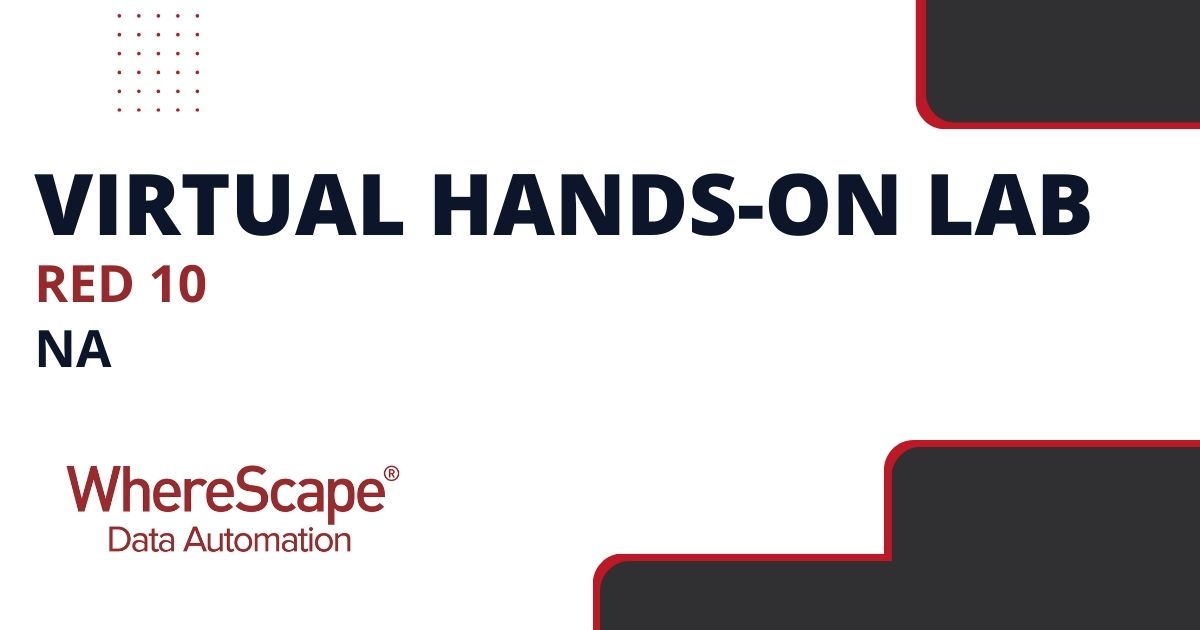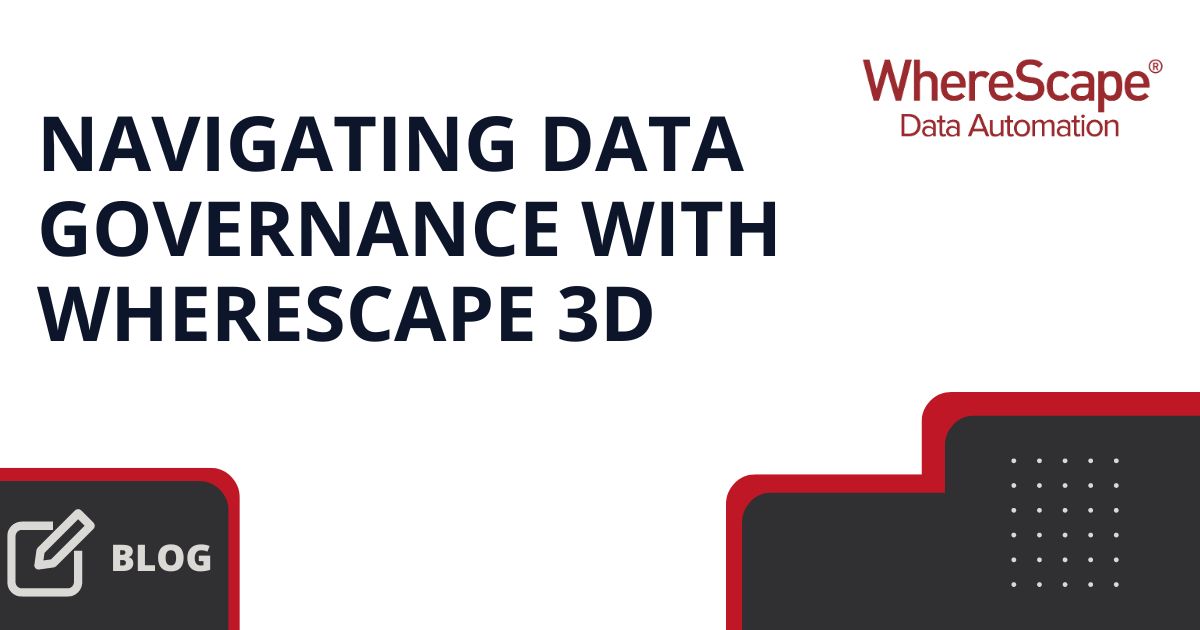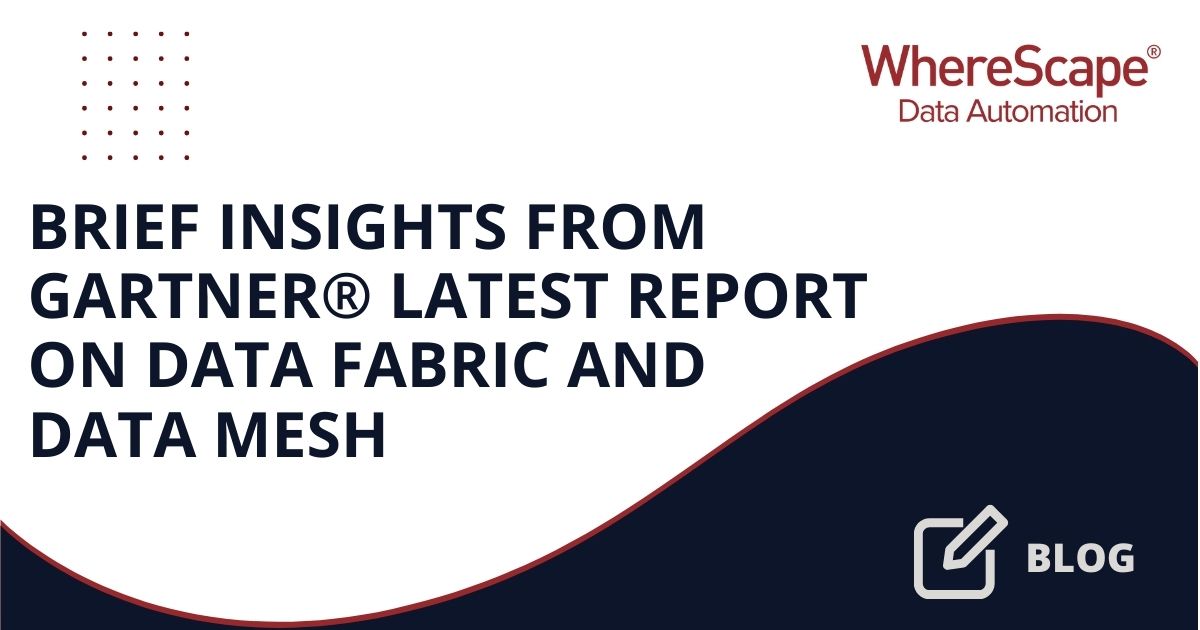Elevate your expertise in data warehousing with...
Overcoming Challenges with AI Hallucinations
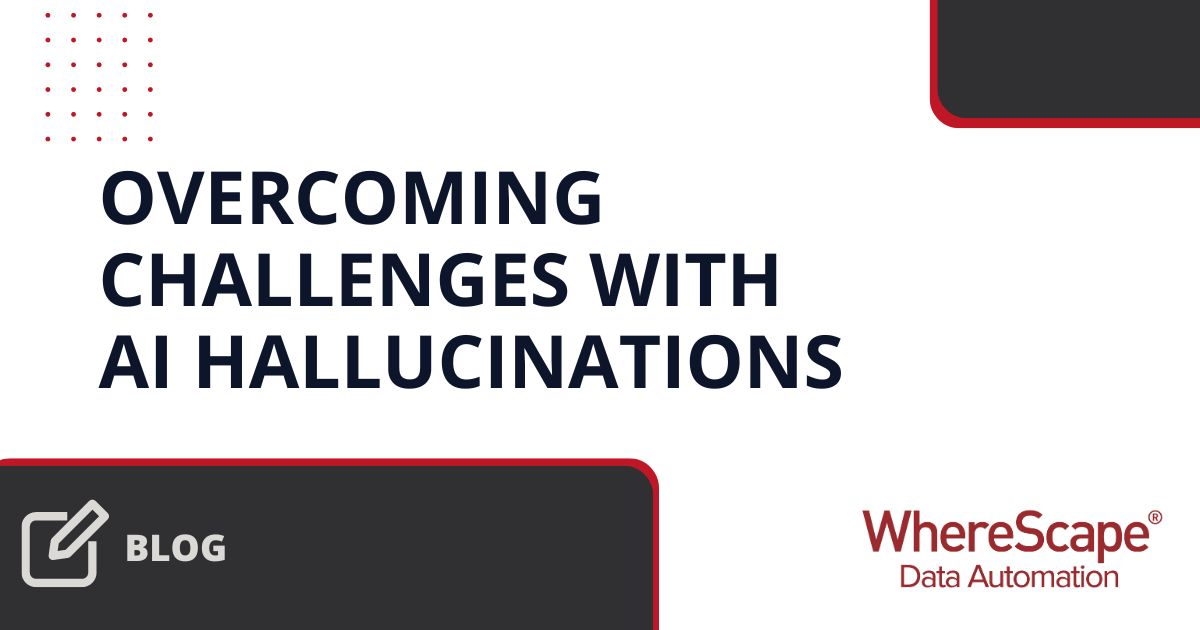
Conversing with your digital assistant on your smartphone, using facial recognition for security, traveling in autonomous vehicles, or browsing recommended products based on your search history – there is no denying AI is embedded in many aspects of our lives. AI has become so popular that a related term has recently become a buzzword: “AI hallucinations.” In fact, it has become such a trendy topic that “hallucinate” was selected as the Dictionary.com word of the year.
What Exactly is an AI Hallucination?

An AI hallucination is a phenomenon that occurs when an AI system generates false or misleading information. It’s like when your brain plays tricks on you, but in this case, it’s the algorithm doing the deceiving. These hallucinations can manifest in various ways, from generating fake data patterns to producing misleading predictions that lead businesses astray.
But why does this happen? AI hallucinations typically arise due to biases in the data, inadequate training, or flawed algorithms. Just like humans, AI systems are susceptible to biases – they learn from the data they’re fed. So, if the data is flawed or incomplete, it can lead to skewed outcomes. Moreover, AI models need extensive training to grasp complex patterns accurately. Without proper training, they’re prone to making mistakes or drawing incorrect conclusions.
What Are the Negative Consequences of AI Hallucinations?

We’ve seen several situations of AI hallucinations to varying degrees, some interesting, some comical, some downright scary.
For example, an AI model may be trained on a dataset of medical images in an attempt to identify cancer cells. However, if that dataset does not include any images of healthy tissue, the AI model may make assumptions and inaccurately diagnose healthy tissue as cancerous.
Another real-world example of an AI hallucination occurred when lawyers representing a client who was suing an airline submitted a legal brief written by ChatGPT to a New York federal judge. The chatbot included phony quotes and cited non-existent court cases in the brief.
Additional ways AI Hallucinations may Impact Various Industries:
Autonomous Vehicles:
AI hallucinations could lead to misinterpretations of road signs, lane markings, or other vehicles, potentially resulting in accidents. For a company developing self-driving cars, such hallucinations could damage their reputation, lead to legal liabilities, and delay the widespread adoption of technology.
Financial Institutions:
AI algorithms are used in financial institutions for tasks such as fraud detection, risk assessment, and trading. If adversarial examples are introduced into the data feeding these algorithms, it could lead to erroneous decisions, causing financial losses for the company. For instance, an adversarial example might cause a fraud detection system to misclassify legitimate transactions as fraudulent, resulting in unnecessary freezes on customers’ accounts and loss of trust.
Manufacturing and Quality Control:
AI systems are increasingly being used in manufacturing processes for quality control, defect detection, and predictive maintenance. Incomplete or inaccurate data introduced into the system could lead to faulty quality assessments, resulting in defective products reaching the market. This could lead to increased product recalls, warranty claims, and customer dissatisfaction, ultimately impacting the company’s bottom line and brand reputation.
How To Prevent AI Hallucinations?

To be clear, Artificial Intelligence is an amazing, indispensable tool for the 21st Century and is not something that should be avoided out of fear. As you can imagine, the more data you’re working with, and the more complex your system is, the more AI can assist your business intelligence operations. However, this can be a double-edged sword as the higher the volume and complexity of the data the higher the chance for errors.
AI assists in maintaining consistency in decision-making and predictive modeling for business intelligence. Unlike humans, who may be influenced by biases or shifting levels of performance, AI systems can provide steady, reliable analysis and recommendations based on the data they are fed – and that is the point to remember – the quality of the data is paramount.
So, the big question becomes “How can I protect my businesses from falling victim to these AI-induced hallucinations?” The key factor is ensuring you are working with complete, accurate data. To take that a step further, ensuring the system in which you are inputting that data is reliable, consistent, and precise is of equal importance. To avoid AI hallucinations, your database, data warehouse, and the platform on which that data is hosted must run in conjunction with each other, and they must be developed with consistent, error-free code.
WhereScape Helps Eliminate the Potential for AI Hallucinations

Enter WhereScape – your ally in the world of data automation when it comes to enhancing business intelligence while mitigating the risks of AI hallucinations. WhereScape streamlines the entire data infrastructure process, from data warehouse architecture to data integration to analytics, making it faster, more efficient, and less error-prone. By automating repetitive tasks and reducing manual intervention, WhereScape ensures that your data pipelines are robust, accurate, and reliable.
WhereScape also promotes data governance and quality assurance, two critical components in combating AI hallucinations. With WhereScape, you can establish clear guidelines for data usage, monitor data quality in real time, and implement safeguards to prevent the propagation of erroneous information.
Empowering Data Professionals
WhereScape empowers data professionals to collaborate effectively and iterate rapidly, ensuring that AI models are thoroughly vetted and optimized before deployment. By fostering a culture of transparency and accountability, WhereScape enables organizations to detect and rectify potential issues early on, minimizing the risk of AI hallucinations wreaking havoc on their business operations.
WhereScape leverages advanced data modeling and metadata management capabilities to identify and mitigate biases in the data. By analyzing metadata attributes such as data lineage, provenance, and quality scores, WhereScape can flag potential sources of bias and enable data scientists to take corrective actions proactively.
Furthermore, WhereScape facilitates version control and rollback mechanisms, allowing companies to track changes made to their data infrastructure over time. In conjunction with version control, WhereScape’s tools automatically document all updates for both the analysts and end-users, providing full visibility on what changed, when it changed, and from what source the change occurred. This feature is particularly crucial when dealing with AI models, as it enables data scientists to trace back the origins of erroneous outputs and pinpoint the root cause of AI hallucinations.
Through targeted code generation, WhereScape opens the potential for feeding Artificial Intelligence APIs with data, providing data engineers an environment for developing, testing, and deploying AI models. By eliminating data silos and streamlining workflows, WhereScape accelerates the AI development lifecycle, enabling organizations to deliver more accurate and reliable AI-driven insights to their stakeholders.
Minimize AI Hallucinations in BI with WhereScape
AI hallucinations can pose a significant threat to businesses seeking to leverage AI for enhanced business intelligence. However, with the right data automation tools and practices in place, companies can minimize the risks associated with AI hallucinations while maximizing the benefits of AI-driven insights. So, if you’re ready to take your business intelligence to the next level, consider harnessing the power of WhereScape and request a demo to embark on a journey toward data-driven success!
Navigating Data Governance with WhereScape 3D
Properly managing and organizing data allows businesses to not only understand crucial patterns and trends, but also to leverage that data in strategic ways that grow revenue over time. Data drives decision-making and paves the way for innovation when used properly....
Deep Dive into WhereScape RED: Features and Benefits
Transforming a business’s various databases and files into actionable insights and reports is crucial, but incredibly time-consuming with traditional tools. Fortunately, with data warehouse automation tools like WhereScape RED, organizations can take advantage of a...
Brief Insights from Gartner® Latest Report on Data Fabric and Data Mesh
In the rapidly evolving world of data management, distinguishing between the myriad of strategies and technologies can be daunting. The latest Gartner® report, "How Are Organizations Overcoming Issues to Start Their Data Fabric or Mesh?" provides critical insights...
ETL vs ELT: What are the Differences?
In data management, the debate between ETL and ELT strategies is at the forefront for organizations aiming to refine their approach to handling vast amounts of data. Each method, ETL vs ELT, offers a unique pathway for transferring raw data into a warehouse, where it...
Embracing the Future of Data Management Recap: Insights from Mike Ferguson
In our recent webinar, "Embrace the Future of Data Management with Automated Cloud Data Warehousing," we had the privilege of diving into the transformative world of cloud data warehousing and highlighting the pivotal role of automation. Guided by our own Brad Kloth,...
How to Hire and Retain Data Warehouse Developers
The projected data warehouse developer job growth rate is 21% from 2018-2028, with about 284,100 new jobs for data warehouse developers projected over the next decade, according to Zippia. This surge in demand for data warehouse talent is being felt across businesses...
8 Reasons to Make the Switch to ELT Automation
Extraction, loading, and transformation (ELT) processes have been in existence for almost 30 years. It has been a programming skill set mandatory for those responsible for the creation of analytical environments and their maintenance because ELT automation works....
Empowering Data Excellence: WhereScape Joins Forces with Peloton Data Solutions
WhereScape is thrilled to announce an exciting new partnership with Peloton Data Solutions, a beacon of data warehouse expertise in New Zealand. This collaboration unites two leaders in data management and automation, poised to set new standards in data warehouse...
What is a Data Model?
A data model depicts a company's data organization, standardizing the relationships among data elements and their correspondence to real-world entities' properties. It facilitates the organization of data for business processes and information systems, offering tools...
Webinar Recap: Navigating the Future of Data Analytics
In an era where data is the new gold, understanding its trajectory is crucial for any forward-thinking organization. Our recent webinar, "Capitalizing on Data Analytic Predictions by Focusing on Cross-Functional Value of Automation and Modernization," hosted in...
Related Content
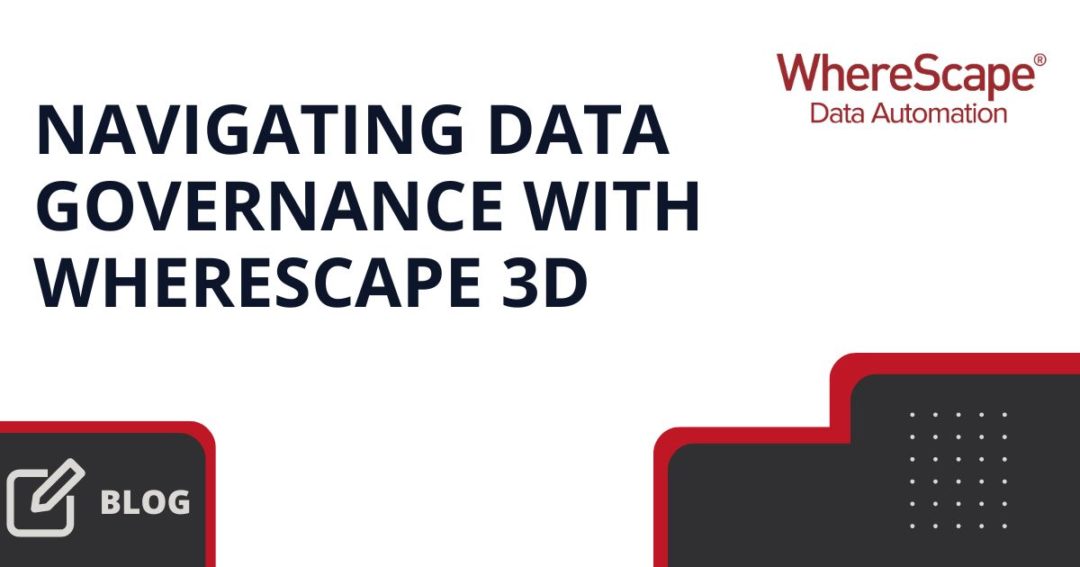
Navigating Data Governance with WhereScape 3D
Properly managing and organizing data allows businesses to not only understand crucial patterns and trends, but also to leverage that data in strategic ways that grow revenue over time. Data drives decision-making and paves the way for innovation when used properly....

Deep Dive into WhereScape RED: Features and Benefits
Transforming a business’s various databases and files into actionable insights and reports is crucial, but incredibly time-consuming with traditional tools. Fortunately, with data warehouse automation tools like WhereScape RED, organizations can take advantage of a...
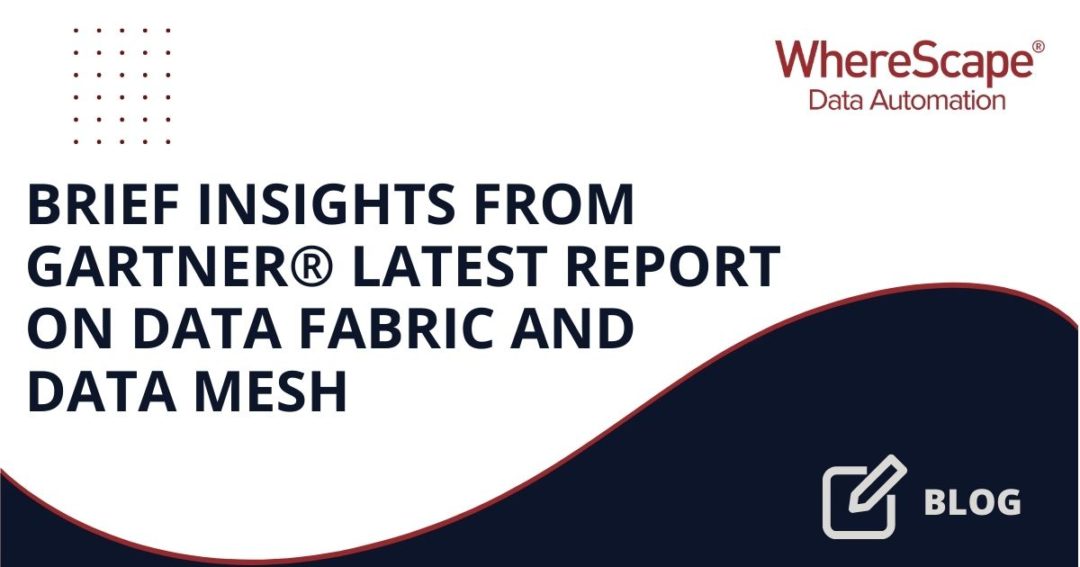
Brief Insights from Gartner® Latest Report on Data Fabric and Data Mesh
In the rapidly evolving world of data management, distinguishing between the myriad of strategies and technologies can be daunting. The latest Gartner® report, "How Are Organizations Overcoming Issues to Start Their Data Fabric or Mesh?" provides critical insights...
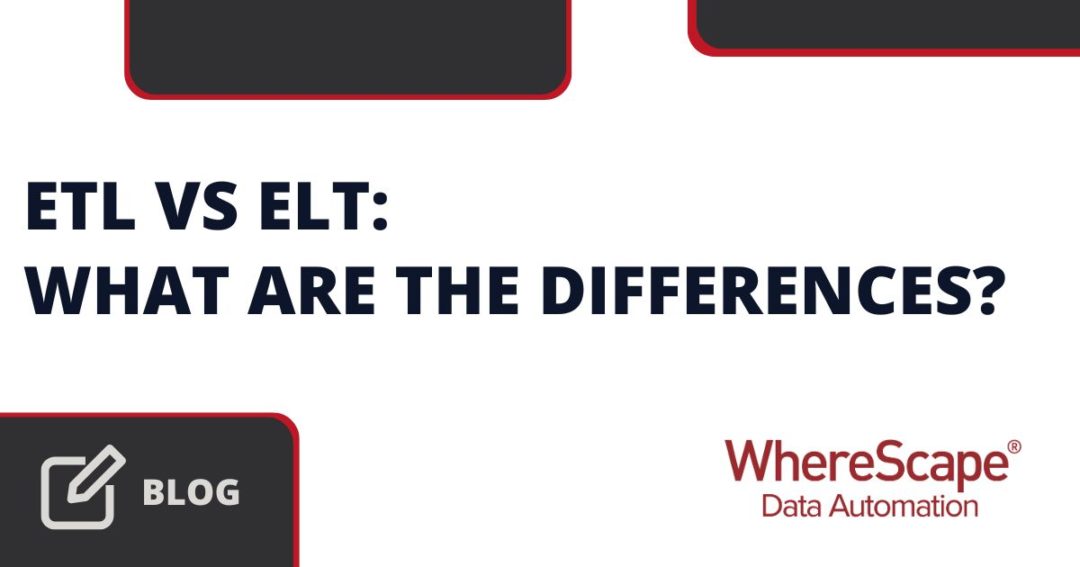
ETL vs ELT: What are the Differences?
In data management, the debate between ETL and ELT strategies is at the forefront for organizations aiming to refine their approach to handling vast amounts of data. Each method, ETL vs ELT, offers a unique pathway for transferring raw data into a warehouse, where it...

